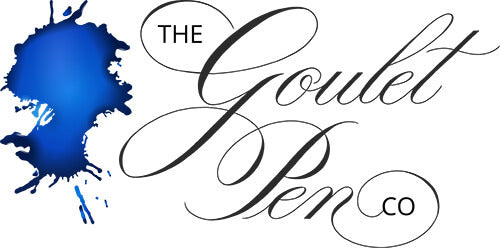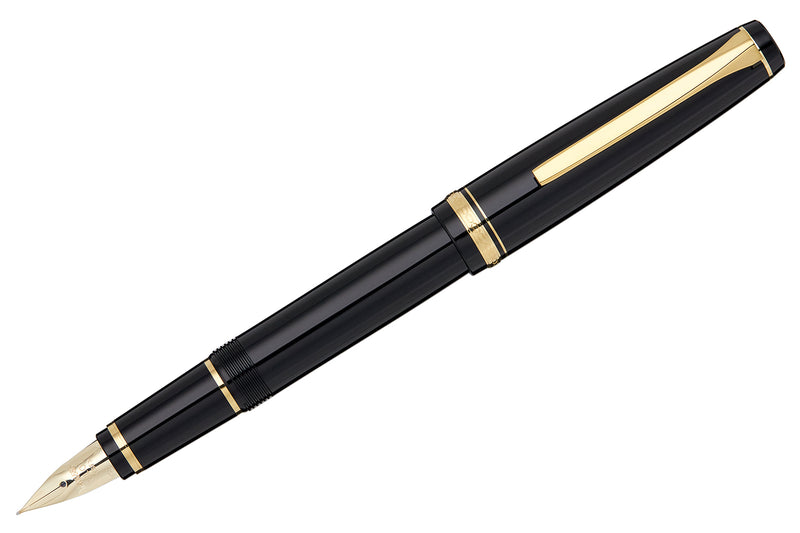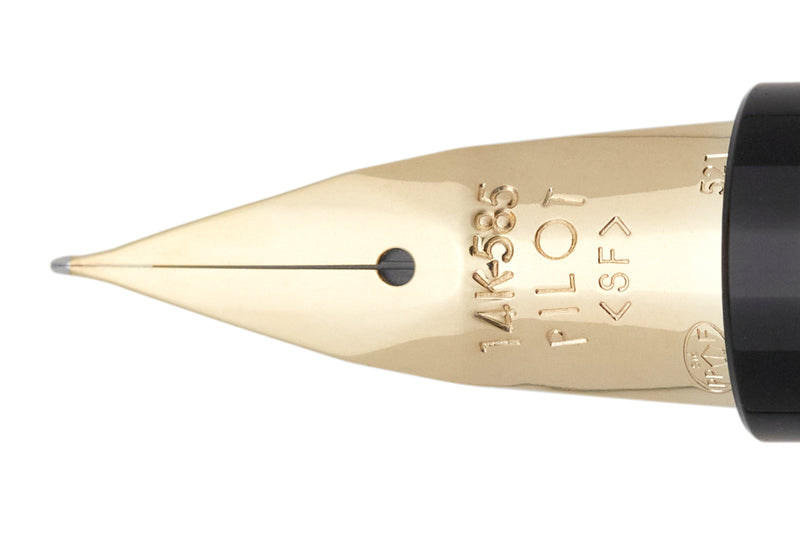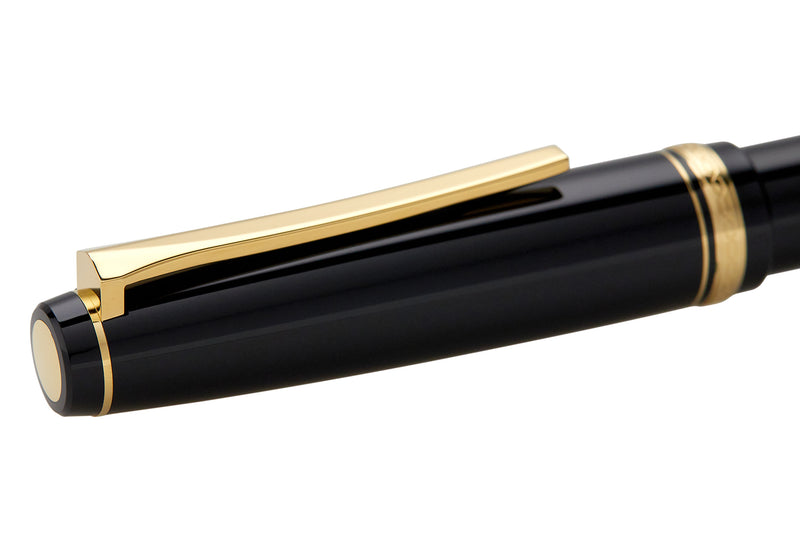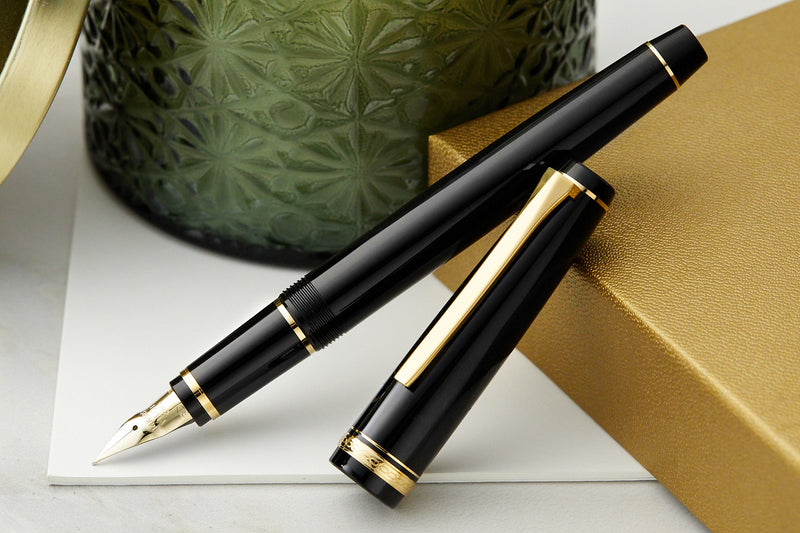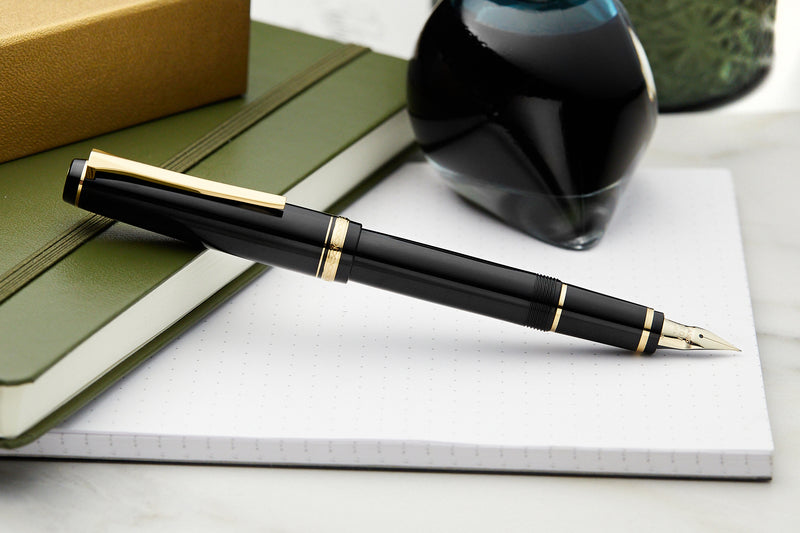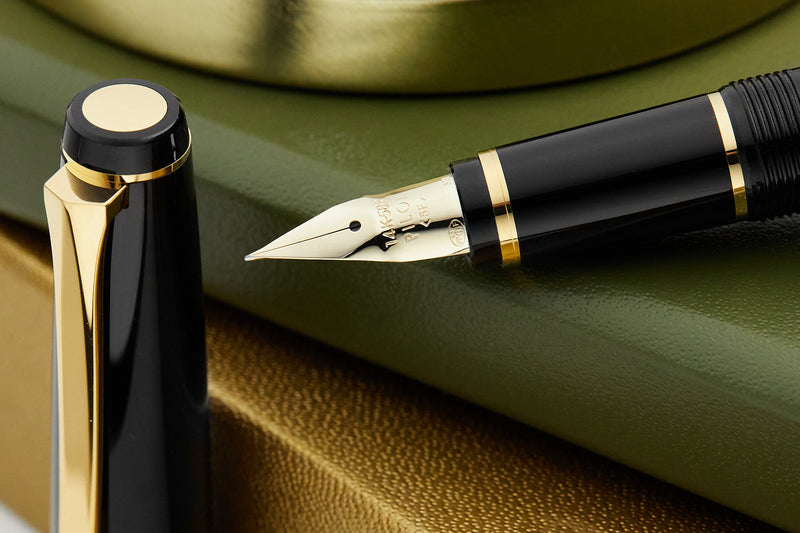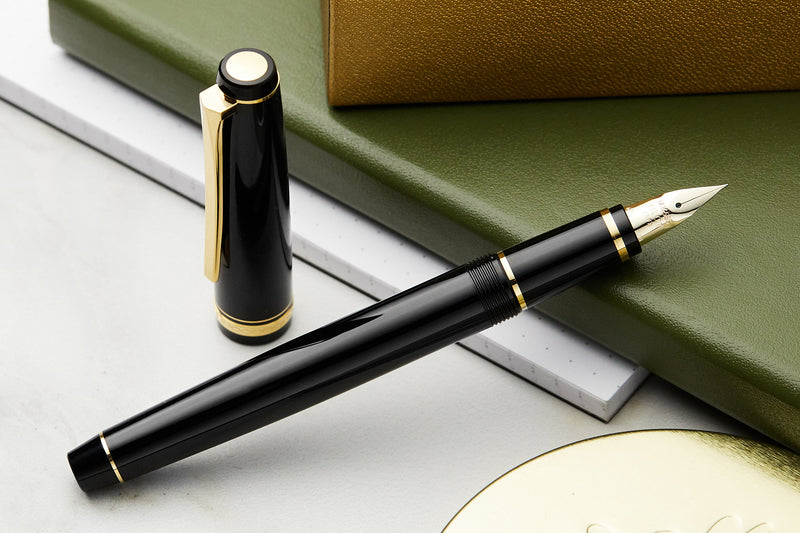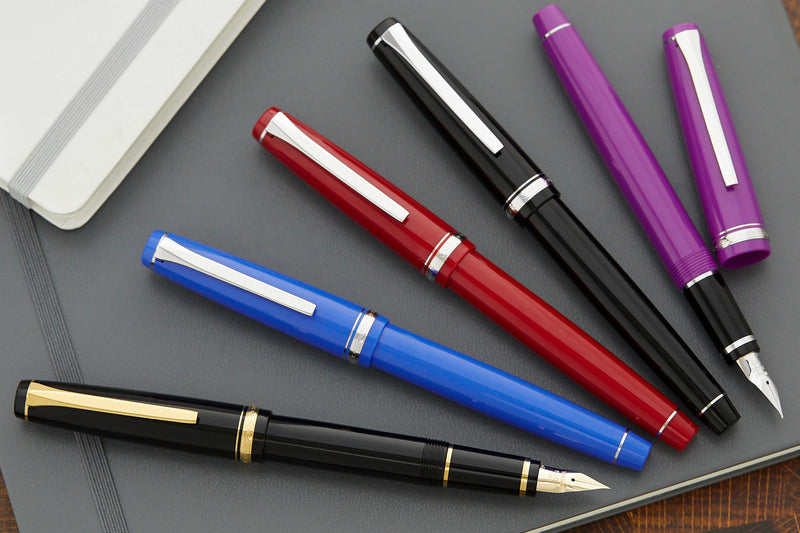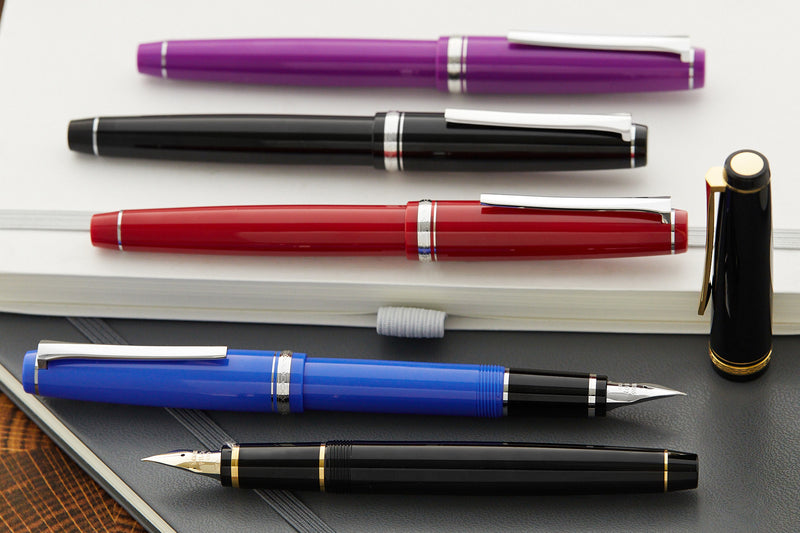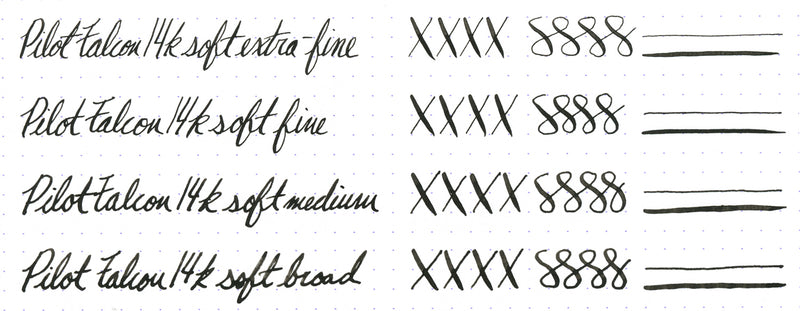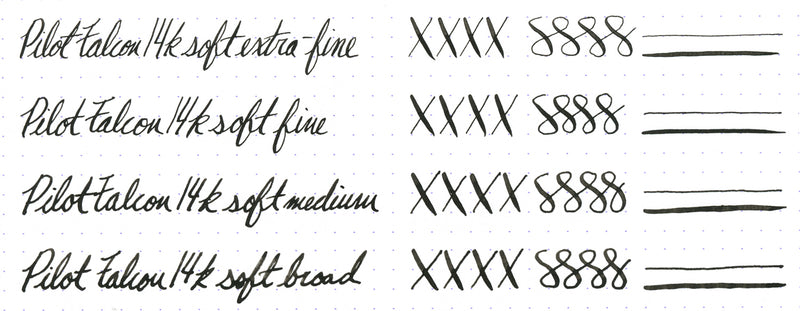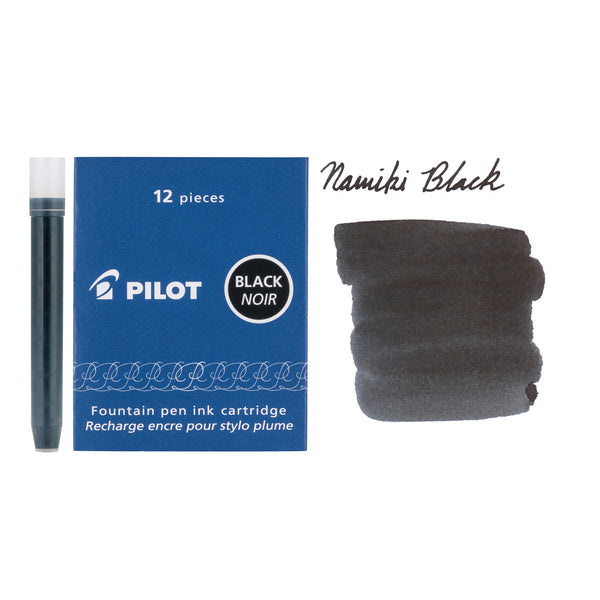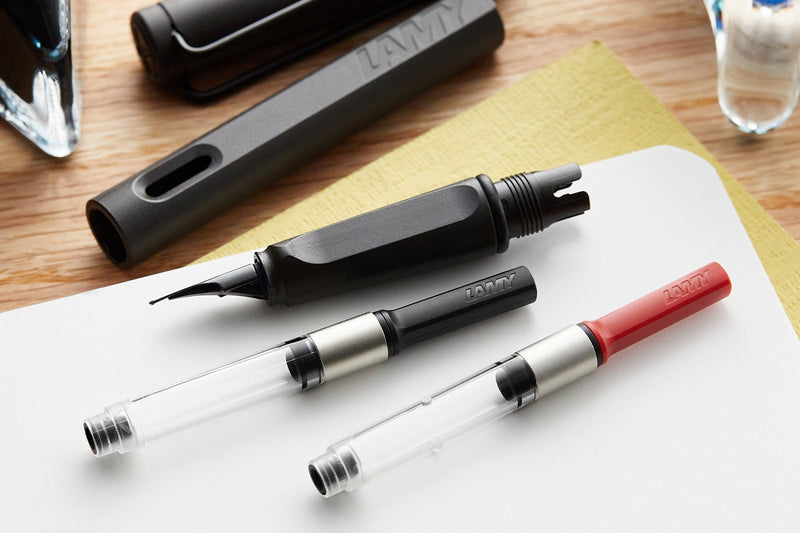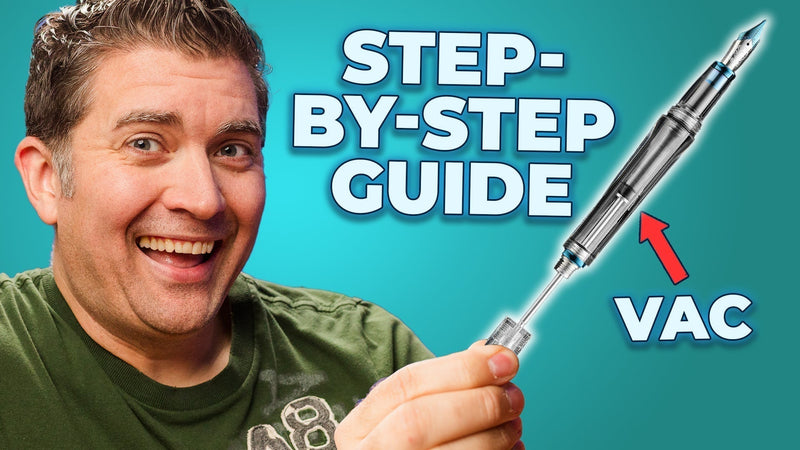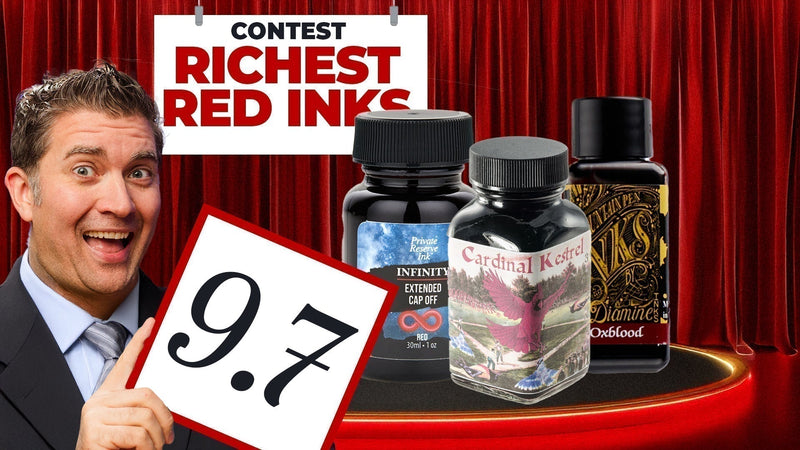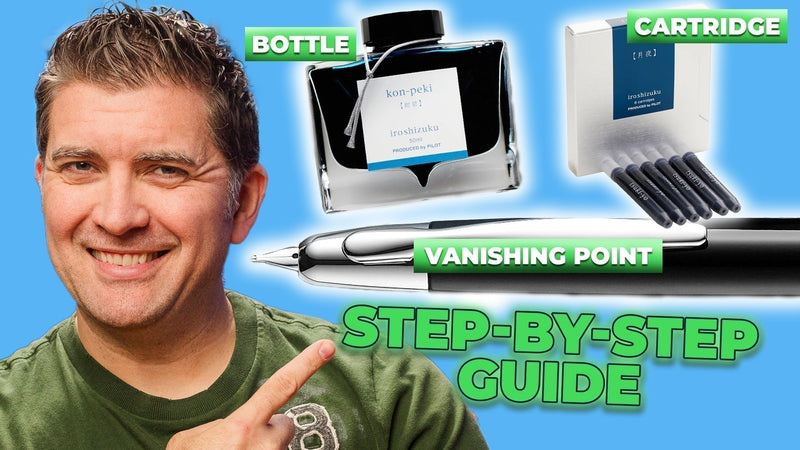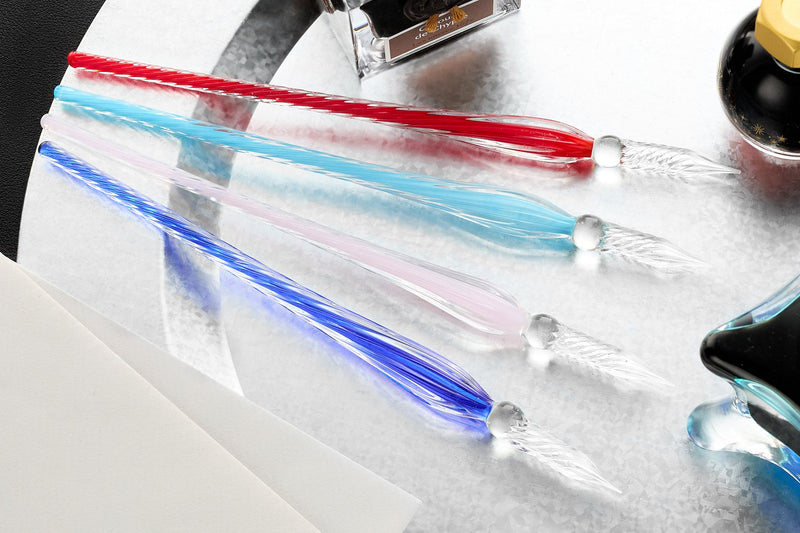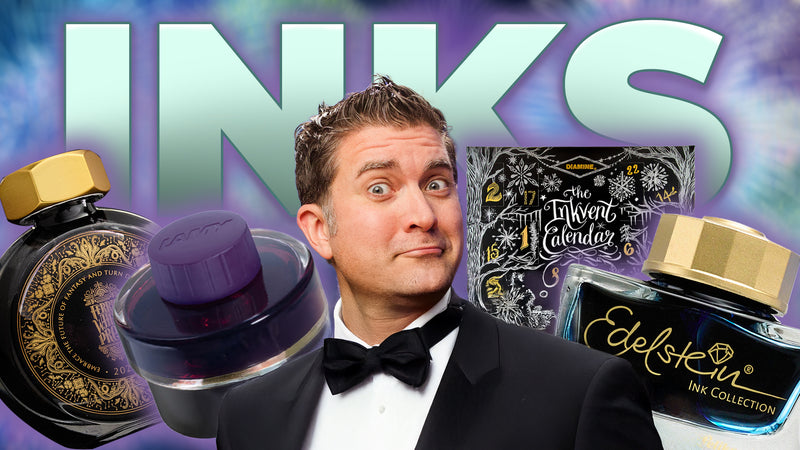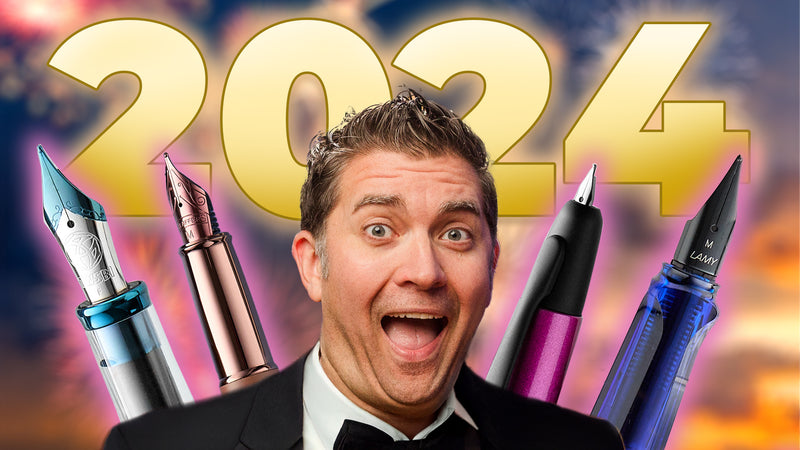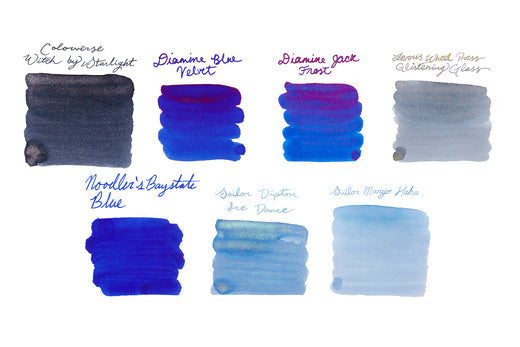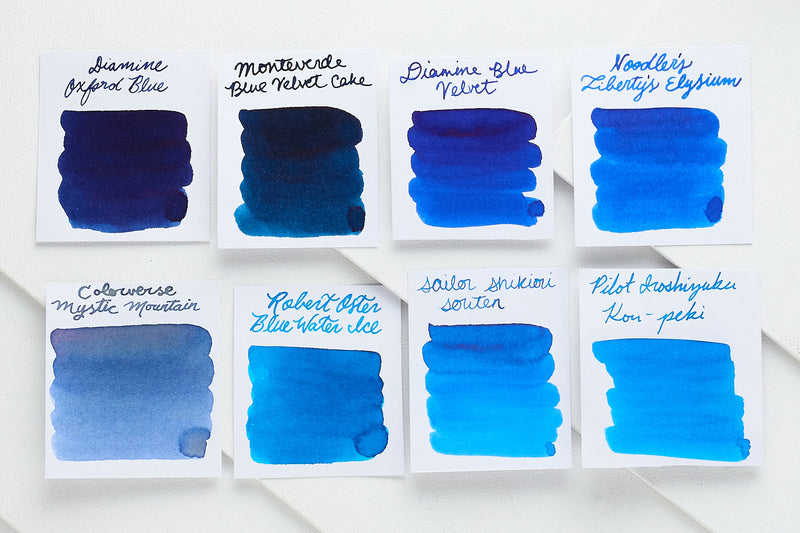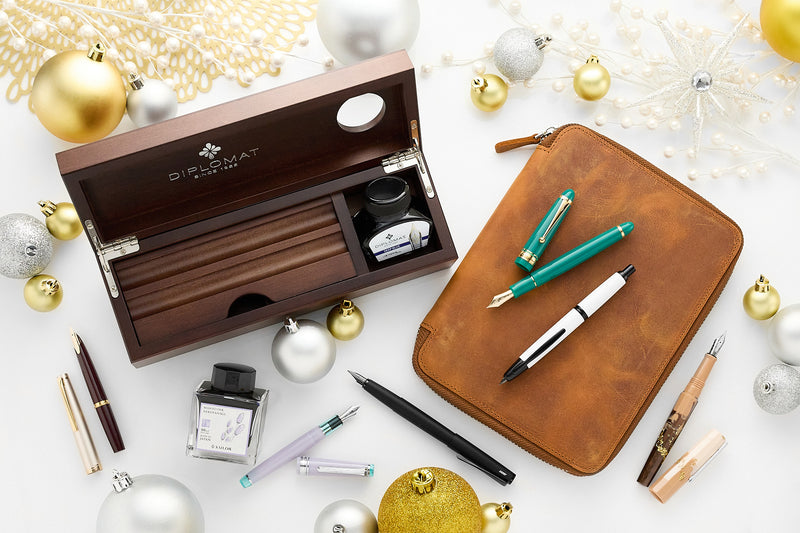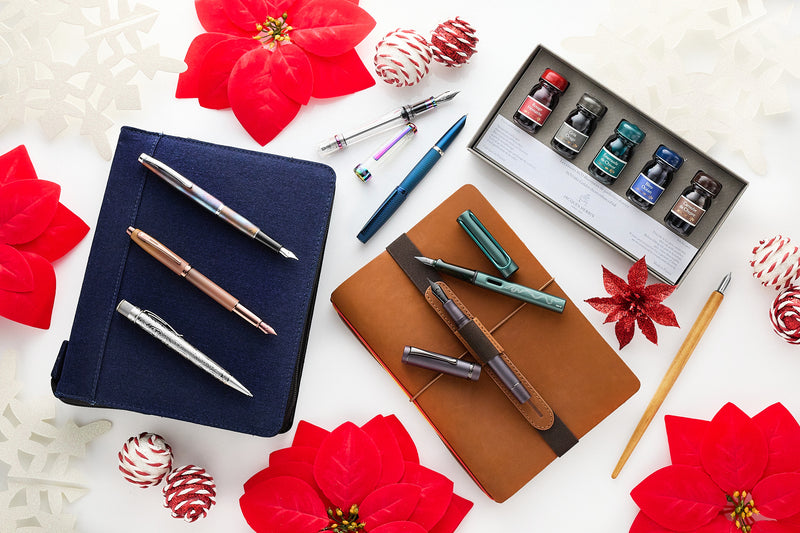Pilot Falcon Fountain Pen - Black/Gold
The Pilot Falcon (previously known as the Namiki Falcon) is an iconic pen in the fountain pen world. It is most famous for its 14k gold soft nib, which provides line variation when you change your writing pressure. This solid black fountain pen has gold trim and includes a Con-40 converter and a Pilot/Namiki ink cartridge, packaged in a Pilot gift box.
The softness of the nib is such that if you want to use it for daily writing you can, without having to flex it out. Though if you do want to showcase line variation, all you need to do is increase your writing pressure on the downstrokes and it's there for when you need it. Pilot doesn't advertise this as a "flex" pen, though it has that reputation in the fountain pen community. It most certainly provides distinct line variation, though you can overdo it, so just be cognizant of how far you're pushing it when you flex the nib tines.
The soft extra-fine nib is quite fine, and has a very toothy feel to it though it does provide the most dramatic line variation of all the nib options. The soft-fine has quite a lot of line variation, as well, with a noticeably smoother feel than the soft extra-fine so it's ideal as an 'everyday' pen. The soft medium and soft broad are quite smooth and enjoyable to write with, though the line variation is less noticeable on these nib sizes than the finer nibs. Pilot (and other Japanese nib companies) has a reputation for grinding their nibs finer than European brands. We've found that to be the case with the extra-fine and fine nibs, while the medium and broad nibs are more similar to European nibs.
The threads on the grip are subtle, and while your fingers may touch them while you're writing, it's not bothersome at all for most writers. This is a slightly lighter pen than most at 19g, a noticeable difference from the heavier Pilot Metal Falcon. It's well-balanced with the cap posted or not. The screw-cap pushes on the back of the pen to post, and holds very firmly.
While the Falcon is certainly an investment, if you appreciate Pilot's quality and are looking for a reliable soft nib in a professional-looking pen, then you should give this pen a serious look.
Click here to shop all compatible Pilot ink cartridges.
- Condition
- New
- Brand
- Pilot
- Type
- Fountain Pens
- Color
- Black
- Demonstrator
Whether or not the barrel of the pen is translucent, allowing you to see the ink and filling mechanism inside.
- No
- Body Material
- Resin
- Cap Rotations
For pens with a screw-cap closure, how many rotations it takes to uncap/recap the pen.
- 2
- Cap Type
How the cap is opened/closed from the barrel of the pen. Some common options include Snap-Cap, Screw-Cap, Magnetic Cap, or Capless (no cap).
- Screw-cap
- Compatible inks & refills
Which ink this pen will accept. Choices include bottled ink and various styles of pre-filled ink cartridges.
- Bottled ink, Proprietary Pilot ink cartridges
- Filling Mechanism
How the pen fills with ink. Click here to watch our video tutorial on common filling mechanisms.
- Cartridge, Converter
- Grip Material
- Resin
- Nib Size
- Soft Extra-Fine, Soft Fine, Soft Medium
- Nib Color
- Gold
- Nib Material
- 14k Gold
- Postable
Whether or not the cap fits securely onto the back of the barrel when open.
- Yes
- Retractable
Whether or not the nib/tip can retract into the body of the pen (usually for click or twist-open style pens).
- No
- Diameter - Body
- 12mm (0.5in)
- Diameter - Cap (without clip)
- 14mm (0.6in)
- Diameter - Cap (with clip)
- 16.8mm (0.7in)
- Diameter - Grip (mm)
Measured from the place most people choose to rest their fingers, which varies with each pen.
- 10.0mm
- Length - Body
The measurement from the back end of the barrel to the tip of the nib.
- 123mm (4.8in)
- Length - Cap
- 64mm (2.5in)
- Length - Nib
The measured length of the visible portion of the nib when it is installed in the pen, from grip to tip.
- 18.4mm (0.7in)
- Length - Overall (Closed)
- 136mm (5.4in)
- Length - Overall (Posted)
When the cap of the pen is posted onto the back of the pen body, this is the measurement of the entire pen including the nib.
- 150mm (5.9in)
- Weight - Body
If a converter is included with the pen, this weight is reflected in the total.
- 10g (0.4oz)
- Weight - Cap
- 9g (0.3oz)
- Weight - Overall (g)
- 19.0g
- Max Ink Capacity - Cartridge
The maximum volume of ink that can fit in the pen when using a cartridge.
- 1.10ml
- Max Ink Capacity - Converter
The maximum volume of ink that can fit in the pen when using a converter.
- 0.87ml
